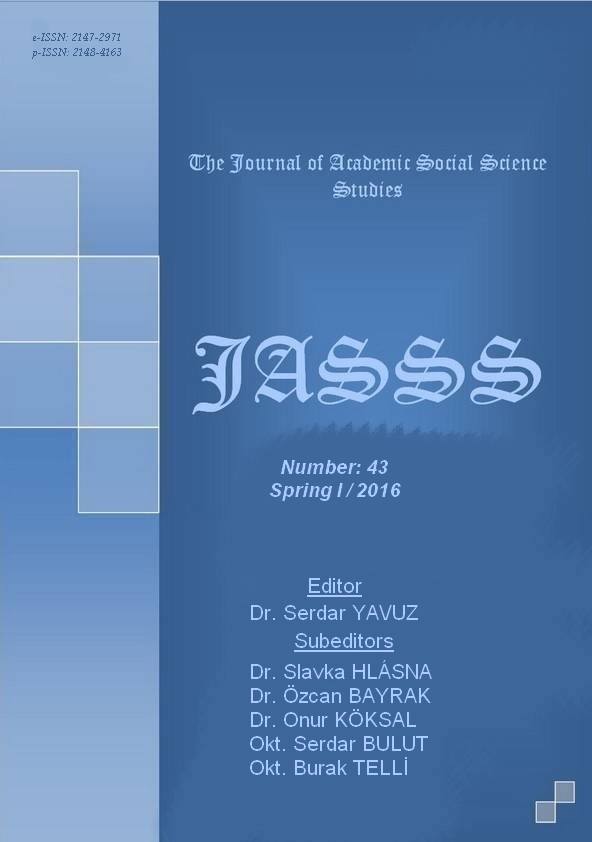Author :
Abstract
18. yüzyılın ortalarında A. G. Baumgarten tarafından temelleri atılan estetik, güzel(lik) olgusunu araştırmak üzerine kurulmuş bir bilim dalıdır. Estetik; sezgi, coşku, duygu gibi konuları içermekle birlikte evrende bulunan her olayın, varlığın ve şeyin açıklayıcı öyküsünü vermeye çalışan bir felsefe dalı olarak da görülmüştür. Estetik; başlangıçta duyusal olan geniş bir sahada güzelle, güzel olanla ilgilenmiştir. Ancak sonraki dönemlerde yüce, naif, çirkin, dehşet veren, korkutucu olan da estetik kategorisi içerisinde ele alınmıştır. Kant da estetiğin insanda bir şeyin güzel olduğu duygusuna sebep olan etken/etkenlerin neler olduğunu araştırmış ve estetik unsurlar olarak gördüğü güzel ile birlikte yüceyi de incelemeye gayret etmiştir. Türk edebiyatında pek çok türde eser vermiş yazarlardan biri olan Reşat Nuri Güntekin’in Bir Kadın Düşmanı romanında estetik unsurları öne çıkarma çabaları sezinlenmiştir. Romanda doğa ve kişi betimlemeleri, Kant’ın estetik olanı ortaya koyma yönüyle belirlediği kavramlardan olan “güzel” ve “yüce” ile ne ölçüde örtüştüğü belirlenmeye çalışılmıştır. Bu bağlamda romanın kahramanlarından Sâra’nın güzelliği; insanların gerçekte haz alabileceği yetkinlikte olsa da yazar, “Sâra gerçekte de güzel midir?” veya diğer bir kahraman olan Homongolos’un görünüşünün çirkinliği “Homongolos’daki yüceliğe engel midir?” sorularıyla insanı karşı karşıya getirmiştir. Bu soruları doğrudan sormayan yazar, okuyucuyu bu soruların cevaplarını aramaya sevk eden bir etki uyandırmıştır. Kant’ın özellikle Güzellik ve Yücelik Duygusu Üzerine Gözlemler eserinde işlediği “güzel” ve “yüce” kavramlarıyla birlikte romana bakıldığında Sâra “güzel” mi, Homongolos “çirkin” mi yoksa “yüce” mi sorularının cevapları aranmıştır.
Keywords
Abstract
Aesthetic, whose foundations were laid in mid- 18’s by A. G. Baumgarten, is a discipline founded upon studying beauty (ness) concept. While aesthetic covers fields of intuition, enthusiasm, and feeling, it is also regarded as a philosophy branch which details the descriptive story of things and existence. In the early periods, aesthetic was interested in the beauty and something beautiful in a sensual context. However in the following periods, something sublime, naive, ugly, terrifying, and scary was studied in the aesthetic category as well. Also, Kant studied aesthetics to find out what elements caused in a person to feel beauty in it and tried to examine the sublime too in an effort to involve both of them as aesthetic elements. In Resat Nuri Guntekin’s Bir Kadın Dusmanı novel, one of the authors who wrote many pieces in Turkish literature, efforts to put aesthetic elements forward were perceived. The degree to which the depictions of nature and people in this novel were in line with Kant’s concepts of the “beauty” and “sublime” which are revealing the aesthetic was researched. In this context, even though the beauty of Sâra, who is one of the heroes in novel, is in such a perfection that people in real life can take pleasure, the author faced his readers with the questions of “Is Sâra beautiful in reality?” and he questioned another hero’s, Homongolos, ugliness of appearance with the question of “Is it an obstacle for Homongolos to be sublime?”. The author does not directly ask these questions, and lead the readers to react and give answers to these questions on their own. Studying the novel by the concepts of “beauty” and “sublime”, which are mentioned in Kant’s “Observations on the Feeling of the Beautiful and Sublime”, the answers to whether Sâra is “beautiful” or Homongolos is “ugly” or “sublime” are analyzed.
